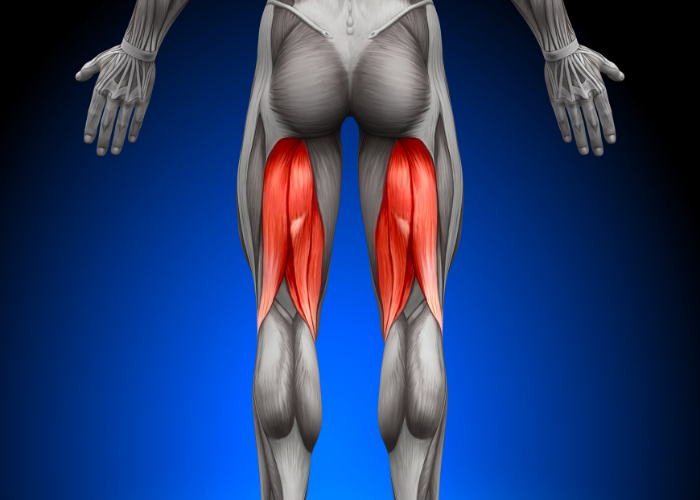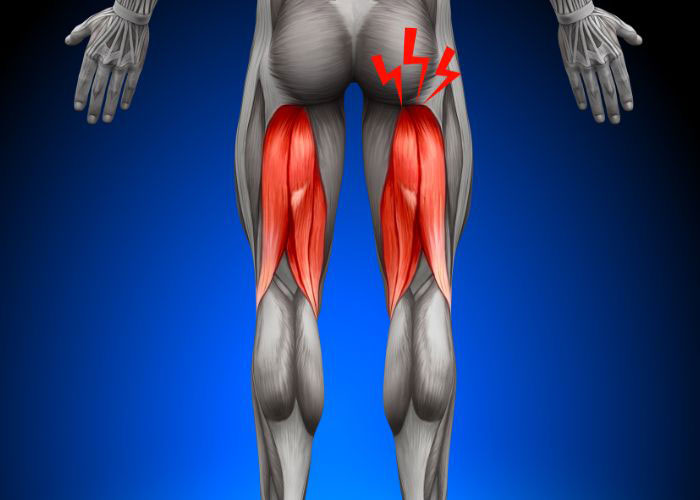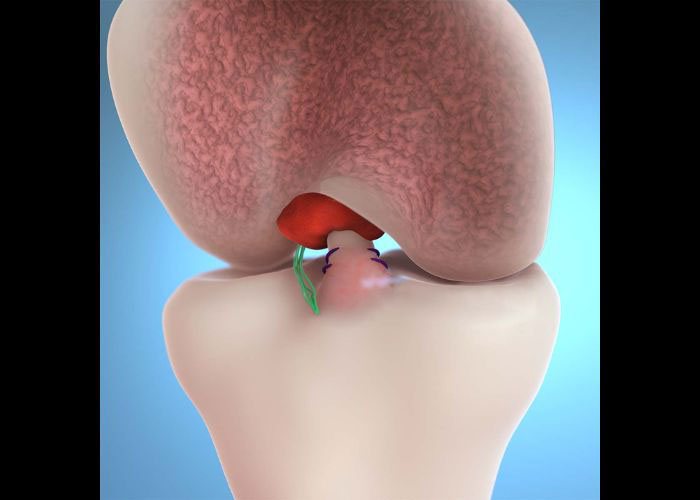What is a hamstring injury?
The semitendinosus, semimembranosus, and biceps femoris are the three muscles that form the hamstring muscle group found along the posterior (back) thigh. This muscle group is utilized in many physical and athletic-related activities as it is responsible for flexing the knee and straightening the hip. A muscle strain or tendon tear can occur when one or more of the hamstring muscles are overloaded with a force they cannot handle. Athletes are the most susceptible to experiencing a hamstring injury, especially those that participate in sports involving a substantial amount of running, jumping, or sudden stopping and starting. Dr. Ronak Mukesh Patel, orthopedic hip specialist serving patients in Sugar Land, Pearland, and the Houston, Texas area, has the knowledge and understanding as well as substantial experience in treating patients who have experienced a hamstring injury.

Are there different types of hamstring injuries?
The severity of the hamstring muscle and/or tendon injury is evaluated and categorized into one of three grades:
- Grade 1 Tear: Described as the simple stretching of the hamstring muscle and/or connecting tendon resulting in a muscle strain or sprain. Mild swelling and muscle spasms may be reported with a Grade 1 tear.
- Grade 2 Tear: Occurs when more hamstring muscle fibers are damaged causing a moderate strain or sprain. Visible bruising may be noted with this injury and can also affect weight-bearing ability.
- Grade 3 Tear: Occurs when one or more of the hamstring muscles and/or connecting tendons are completely torn from their attachment site. Immediate bruising and swelling occur often with a Grade 3 tear.
What is a chronic hamstring injury?
The hamstring tendons are attached to the ischial tuberosities, commonly known as the “sitting bones”, which are the bony prominences along the bottom of the pelvis. Repetitive use of the hamstring muscles, seen with certain athletic activities, can cause an inflammatory condition of these tendons known as hamstring tendinopathy. The outer portion of the hamstring tendons can thicken and become easily torn if the tendon inflammation is not properly treated. Chronic hamstring tendinopathy can lead to gradual pain that worsens with activities of daily living such as sitting, standing, or walking.
What are the symptoms of a hamstring injury?
A complaint commonly reported with a hamstring injury is pain that is deep in the buttocks. Some other symptoms of a hamstring injury can include:
- Pain with sitting
- Sudden and sharp pain in the posterior thigh
- Pain with repetitive activities
- Swelling and bruising at the site of the injury
- Pain when bending at the hip
- Pain with increasing speed and/or pushing off to run
How is a hamstring injury diagnosed?
A comprehensive medical history will be gathered by Dr. Patel to include the initial injury or any prior hip conditions. A thorough physical examination will follow assessing the affected extremity for any bruising, inflammation, or visible deformities. Diagnostic imaging studies, such as x-rays and magnetic resonance imaging (MRI), can confirm a suspected hamstring injury diagnosis.
What is the treatment for a hamstring injury?
Prevention:
Even though hamstring injuries are most common among athletes, non-athletic individuals can experience a hamstring injury as well. There are several strategies that can be implemented to prevent a hamstring injury from occurring altogether. Establishing a proper warm-up routine before any physical activity, particularly activities involving a large amount of running or jumping, is highly encouraged. A warm-up and cool-down routine should include stretches that specifically target the hamstrings. It is recommended to gradually increase the intensity of physical activities by no more than 10% a week. Hamstring injuries are more likely to occur when the intensity is increased too quickly. Lastly, the strength of the gluteal muscles is important in the prevention of hamstring injuries. When the gluteal muscles are weak, the hamstrings have to compensate and can become overloaded resulting in an injury.
Non-surgical treatment:
The majority of hamstring sprains and small tears respond well to non-surgical treatment measures. Avoiding full weight-bearing and non-essential hip motions area encouraged during the healing process. A combination of RICE (rest, ice, compression, elevation) and non-steroidal anti-inflammatory medications (NSAIDs) can mitigate the pain and inflammation associated with this condition. Participation in a physical rehabilitation program can be valuable for recovery.
Surgical treatment:
Surgical intervention may be necessary for Grade 3 hamstring tendon injuries from the ischium (bone) or failed non-surgical therapy. Dr. Patel will reattach the tendon with special surgical anchors and sutures back to the ischium.
Hamstring Specialist

Are you an athlete who participates in frequent running and jumping? If so, you may be at an increased risk of sustaining a hamstring injury. The severity of hamstring injuries varies and can be cured with rehabilitation and resting. More severe tears may require surgical treatment. Complex hip specialist, Dr. Ronak Mukesh Patel is experienced in diagnosing and treating patients in Houston, Sugar Land, and Pearland, TX who have experienced a hamstring injury. Contact Dr. Patel’s team today!








